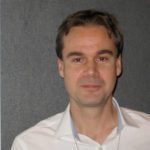Link to Pubmed [PMID] – 34385329
Link to DOI – e210866411810.1073/pnas.2108664118
Proc Natl Acad Sci U S A 2021 08; 118(33):
The pairing of homologous chromosomes represents a critical step of meiosis in nearly all sexually reproducing species. In many organisms, pairing involves chromosomes that remain apparently intact. The mechanistic nature of homology recognition at the basis of such pairing is unknown. Using “meiotic silencing by unpaired DNA” (MSUD) as a model process, we demonstrate the existence of a cardinally different approach to DNA homology recognition in meiosis. The main advantage of MSUD over other experimental systems lies in its ability to identify any relatively short DNA fragment lacking a homologous allelic partner. Here, we show that MSUD does not rely on the canonical mechanism of meiotic recombination, yet it is promoted by REC8, a conserved component of the meiotic cohesion complex. We also show that certain patterns of interspersed homology are recognized as pairable during MSUD. Such patterns need to be colinear and must contain short tracts of sequence identity spaced apart at 21 or 22 base pairs. By using these periodicity values as a guiding parameter in all-atom molecular modeling, we discover that homologous DNA molecules can pair by forming quadruplex-based contacts with an interval of 2.5 helical turns. This process requires right-handed plectonemic coiling and additional conformational changes in the intervening double-helical segments. Our results 1) reconcile genetic and biophysical evidence for the existence of direct homologous double-stranded DNA (dsDNA)-dsDNA pairing, 2) identify a role for this process in initiating RNA interference, and 3) suggest that chromosomes can be cross-matched by a precise mechanism that operates on intact dsDNA molecules.

